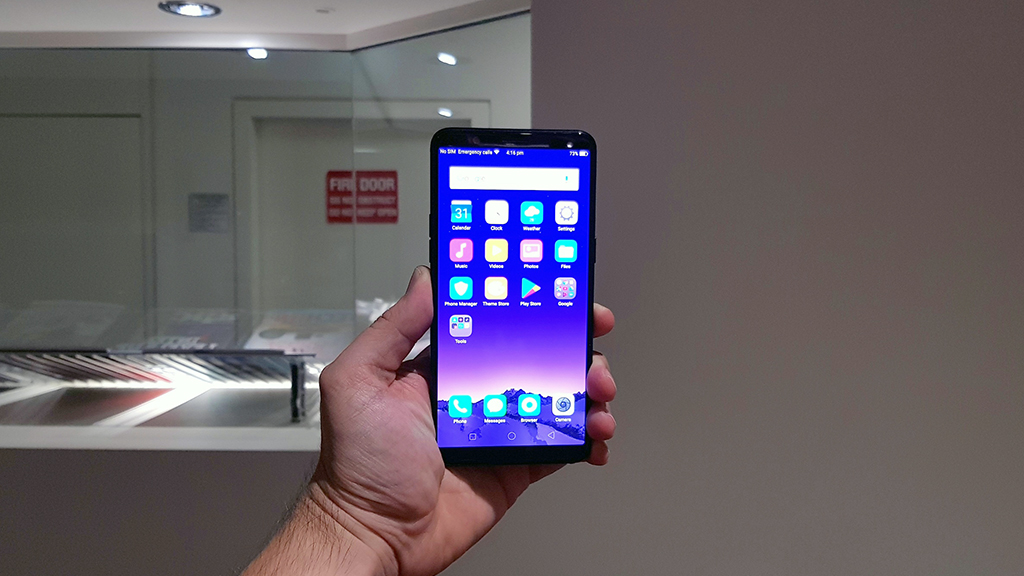Why you can trust TechRadar
Interface and reliability
- Oppo’s ColorOS 3.2 is based on Android 7.1.1
- Improved notification drawer and iPhone-style control center
- Still no app drawer option
Like previous versions of Oppo's ColorOS interface, it's clear that the Chinese phone-maker wants to provide an iPhone-like user experience, despite its operating system being based on Android 7 (aka Nougat). Some people will be fine with this approach, but Android purists may consider its iOS-inspired look and feel tantamount to heresy.
As with previous Oppo phones, all of your apps are still spread across multiple pages on a 4 x 5 grid, with no option to quickly sort them in alphabetical order or only display selected applications.
By contrast, Huawei's EMUI interface has offered the choice between this method and the traditional Android app drawer for a while now, and it would've been nice for ColorOS to finally do the same. Still, we're happy to report that ColorOS 3.2 has improved upon previous iterations of the software in other areas.
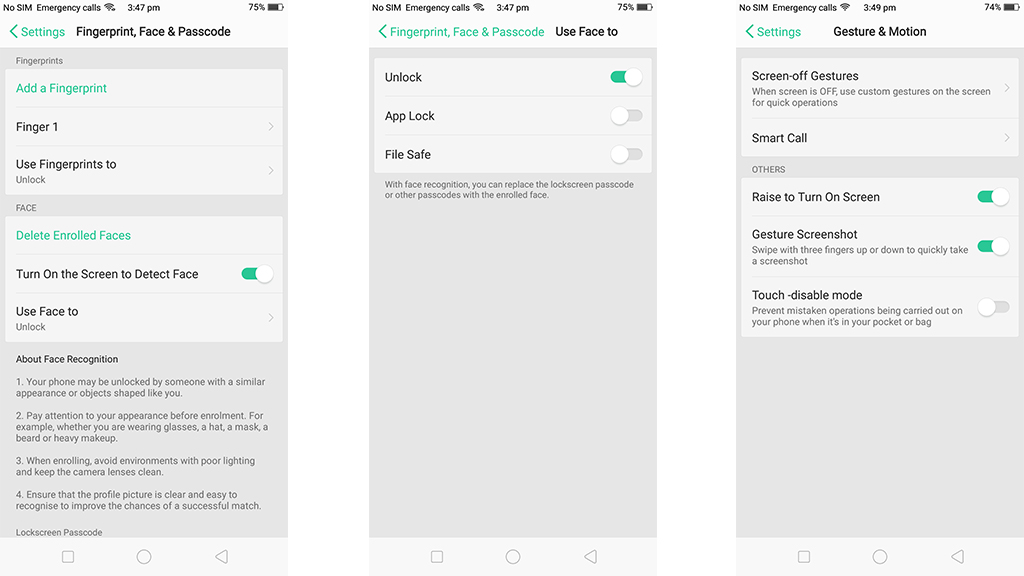
One thing in particular that always bothered us about Oppo's software on previous handsets was that you couldn't view your notifications with a single swipe down. Instead, the quick options menu would take up the entire screen, and you'd have to swipe again from left to right to see your notifications.
Thankfully, this has been fixed – swiping down from the top now takes you directly to your notifications, and you can now reach an iPhone-style control center by swiping up from the bottom.
Fans of Oppo's gesture controls will be happy to know that they've also returned, allowing you to quickly launch the flashlight and camera, as well as execute other functions, with some swirly swipes.
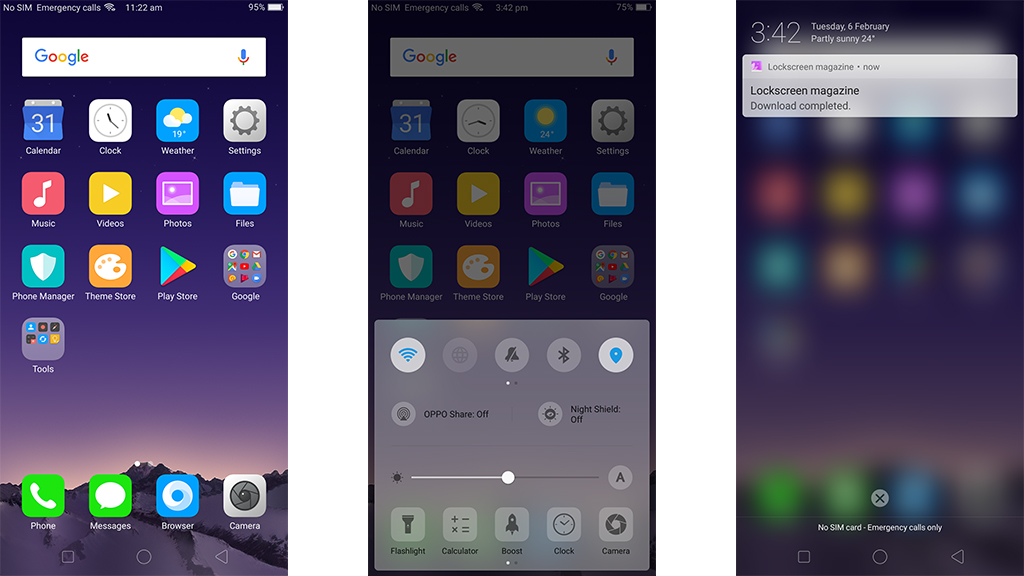
Movies, music and gaming
- Widescreen movies look great on the 18:9 display
- Software-based equalizer offers some customization
- Decent gaming performance
Watching widescreen movies on the R11s is a real treat, thanks to its screen's wider 18:9 aspect ratio. We also like that Oppo has managed to squeeze in that extra screen space while keeping the same physical dimensions as the R11.
Its AMOLED display also provides infinite contrast to anything you're watching, meaning dark movies and TV shows look particularly great on the Oppo R11s. We tested out the first season of Daredevil on the Netflix app and were floored by the inky darkness of every shadow, as well as the hero's original black costume.
The Oppo R11s also handles itself well in terms of music. As has become custom with Oppo’s phones, a built-in equalizer offers 10 different presets, with room for you to create custom settings to your liking.
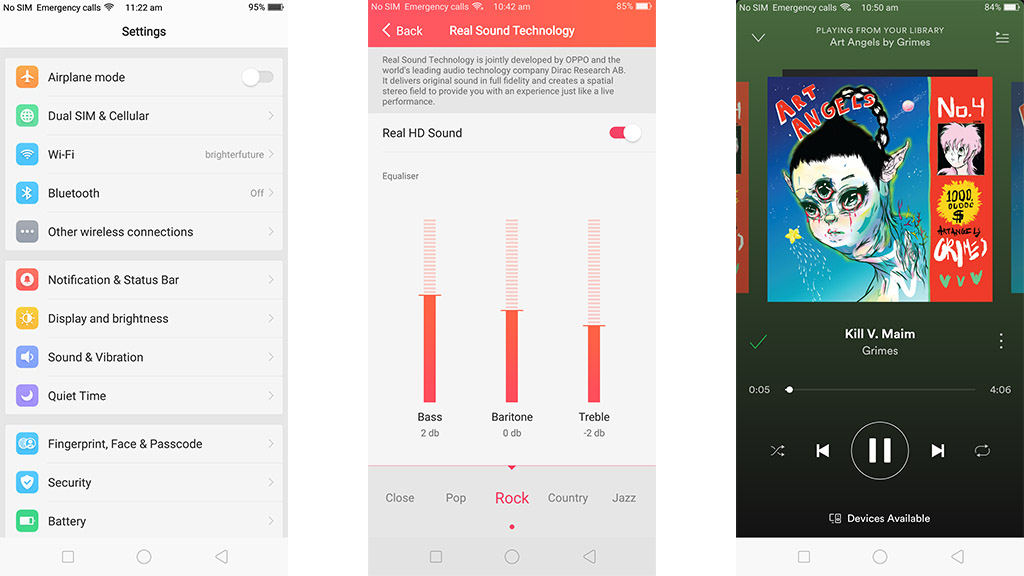
There are three sliders to change bass, baritone and treble, which make a slight difference when tweaked, but nothing earth shattering. Additionally, a ‘Real HD Sound’ setting can be switched on to give your music a bit more clarity.
As for its built-in speaker, the Oppo R11s does a passable job, with audio coming through clearer than we expected and without the usual tinny sound that many handsets produce. In fact, we'd go as far as to say that it outperforms some high-end flagships in that regard.
While the Oppo R11s is not a phone that's aimed at gamers, the handset more than held its own in the games we tested on it in terms of framerates and general graphical quality.
It also helps that the R11s sports a gorgeous AMOLED display, which offers deep blacks and rich colors all round. That said, it'll be a while before most games are ready to take advantage of the phone's 18:9 aspect ratio, with many titles simply opting for black bars on either side of the screen.
Performance and benchmarks
- Outpaces most mid-rangers
- Goes toe-to-toe with the LG G6
While not a beast by any means in terms of performance, the R11s does quite well for a mid-range phone. Unsurprisingly, our Geekbench 4 benchmarks put the Oppo R11s right alongside its predecessor, the R11, with a single-core score of 1,617 and a multi-core score of 5,829.
These scores also put it within spitting distance of the LG G6 – a high-end handset that scored a little higher in its single-core test (1,741) but much less in its multi-core benchmark (4,127).
The R11s sports a Snapdragon 660 chipset, which is essentially the top option from Qualcomm's mid-range 600-series family of chips. Given that limited pedigree, it is actually quite impressive that it's performed almost as well as the Snapdragon 821 featured in LG's flagship.
Although we're yet to test the bigger R11s Plus at the time of this review, we have to imagine the latter will perform even better given that it has a total of 6GB of RAM – a full 2GB more than the standard R11s.
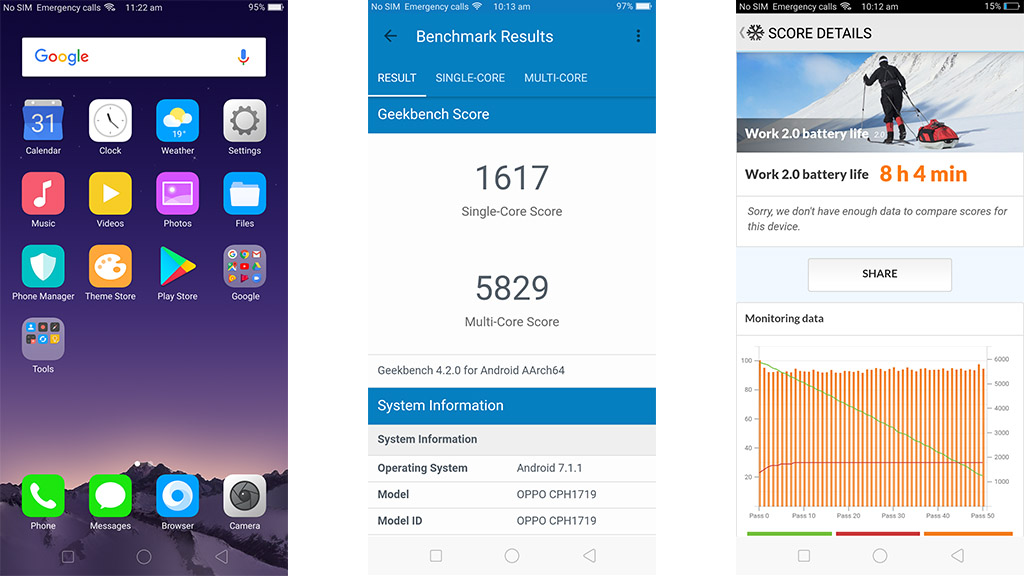
Current page: Anything else I should know?
Prev Page Battery life and Camera Next Page Verdict and competition
Stephen primarily covers phones and entertainment for TechRadar's Australian team, and has written professionally across the categories of tech, film, television and gaming in both print and online for over a decade. He's obsessed with smartphones, televisions, consoles and gaming PCs, and has a deep-seated desire to consume all forms of media at the highest quality possible.
He's also likely to talk a person’s ear off at the mere mention of Android, cats, retro sneaker releases, travelling and physical media, such as vinyl and boutique Blu-ray releases. Right now, he's most excited about QD-OLED technology, The Batman and Hellblade 2: Senua's Saga.
